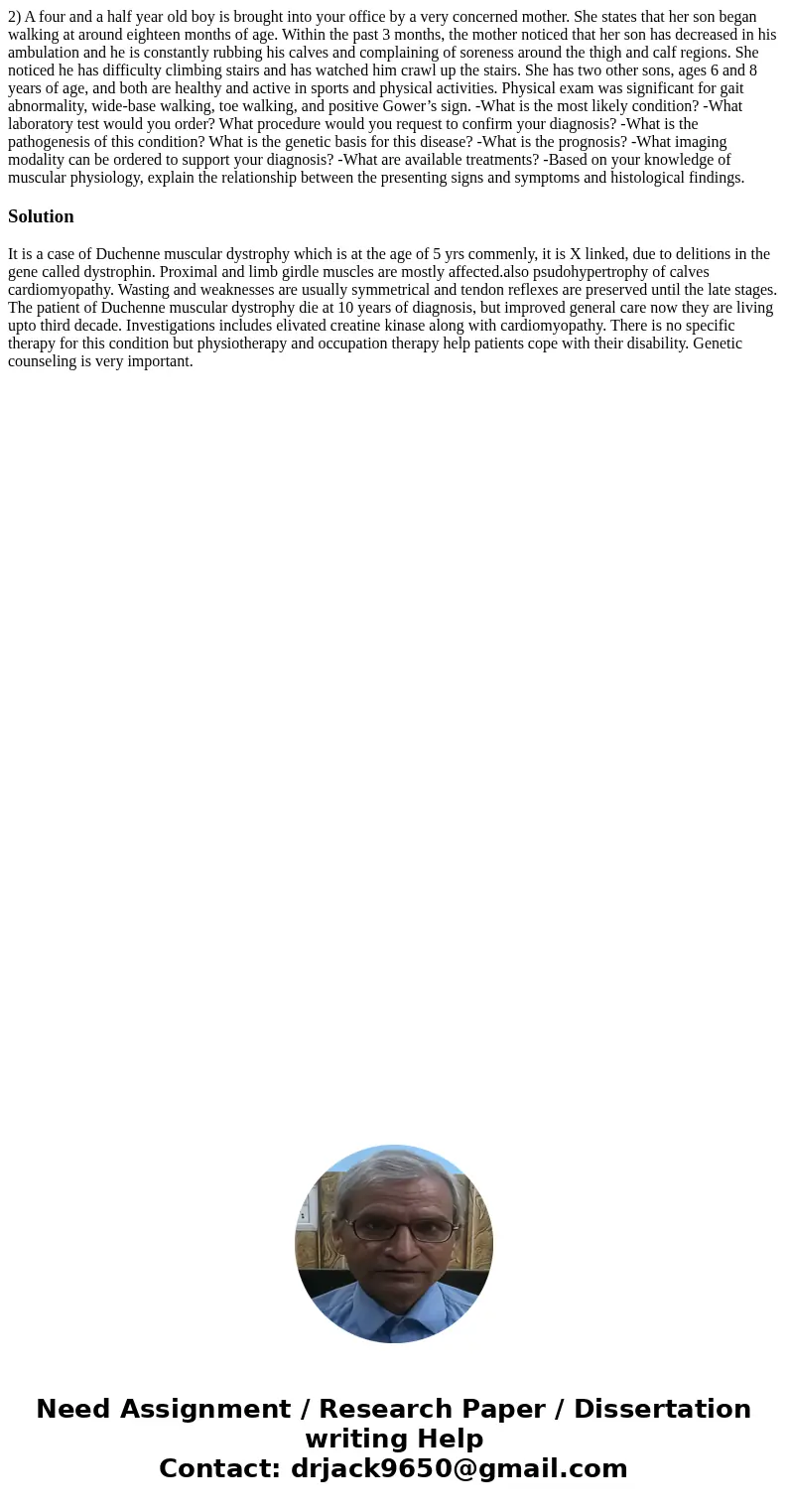2 A four and a half year old boy is brought into your office
2) A four and a half year old boy is brought into your office by a very concerned mother. She states that her son began walking at around eighteen months of age. Within the past 3 months, the mother noticed that her son has decreased in his ambulation and he is constantly rubbing his calves and complaining of soreness around the thigh and calf regions. She noticed he has difficulty climbing stairs and has watched him crawl up the stairs. She has two other sons, ages 6 and 8 years of age, and both are healthy and active in sports and physical activities. Physical exam was significant for gait abnormality, wide-base walking, toe walking, and positive Gower’s sign. -What is the most likely condition? -What laboratory test would you order? What procedure would you request to confirm your diagnosis? -What is the pathogenesis of this condition? What is the genetic basis for this disease? -What is the prognosis? -What imaging modality can be ordered to support your diagnosis? -What are available treatments? -Based on your knowledge of muscular physiology, explain the relationship between the presenting signs and symptoms and histological findings.
Solution
It is a case of Duchenne muscular dystrophy which is at the age of 5 yrs commenly, it is X linked, due to delitions in the gene called dystrophin. Proximal and limb girdle muscles are mostly affected.also psudohypertrophy of calves cardiomyopathy. Wasting and weaknesses are usually symmetrical and tendon reflexes are preserved until the late stages. The patient of Duchenne muscular dystrophy die at 10 years of diagnosis, but improved general care now they are living upto third decade. Investigations includes elivated creatine kinase along with cardiomyopathy. There is no specific therapy for this condition but physiotherapy and occupation therapy help patients cope with their disability. Genetic counseling is very important.
 Homework Sourse
Homework Sourse